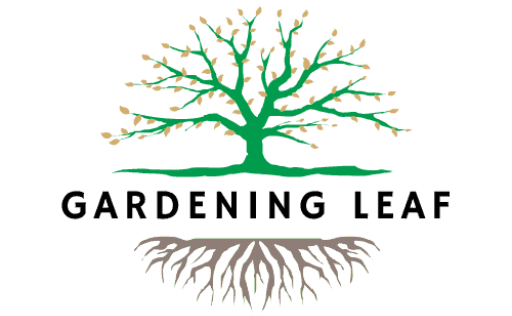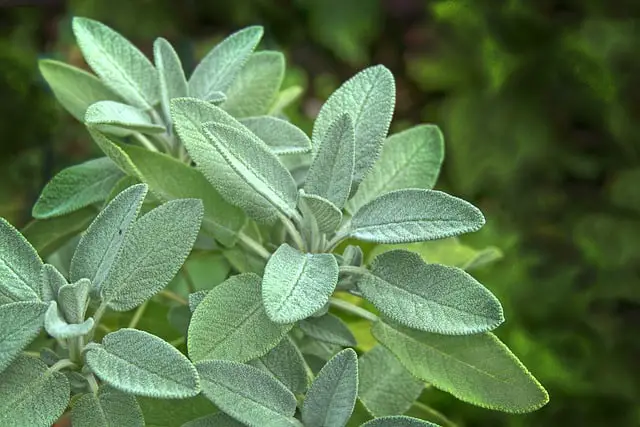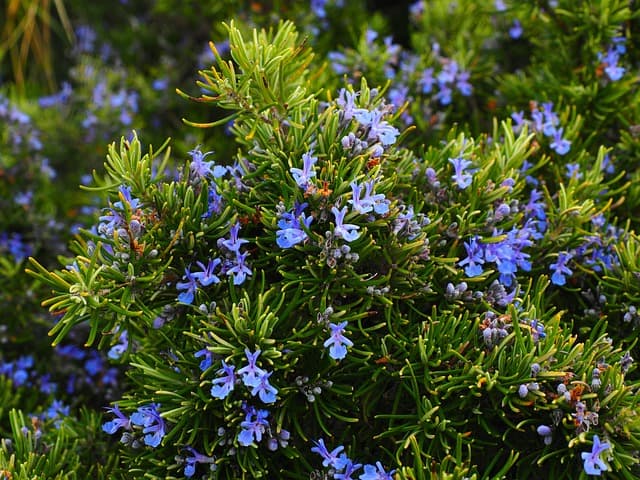How To Harvest Oregano Without Killing the Plant – Guide
You might have considered cultivating your oregano if you enjoy cooking with fresh herbs. Not only does it add a delicious flavor to many dishes, but it also has a range of health benefits. But what do you do when it’s time to harvest your precious herb without causing harm to the plant?
In this blog post, we’ll share some tips and tricks on how to harvest oregano without killing the plant. We’ve covered you, from choosing the right time to harvesting techniques.
Understanding the Growth and Use of Oregano
Oregano is a highly intelligent herb that may be used in various cooking styles. Growing up to 2 feet in height, oregano plants require careful harvesting of their leaves to promote healthy growth. This aromatic herb is well-known for its distinctive flavor and essential oil, making it a popular dish addition. Whether fresh or dried, oregano adds a unique taste to culinary creations.
Harvesting the whole leaves is recommended to enjoy the best flavor of oregano. With its purple flowers and robust germination, oregano can easily be grown from seeds, allowing you to have it anytime.
Recognizing The Right Time to Harvest Oregano
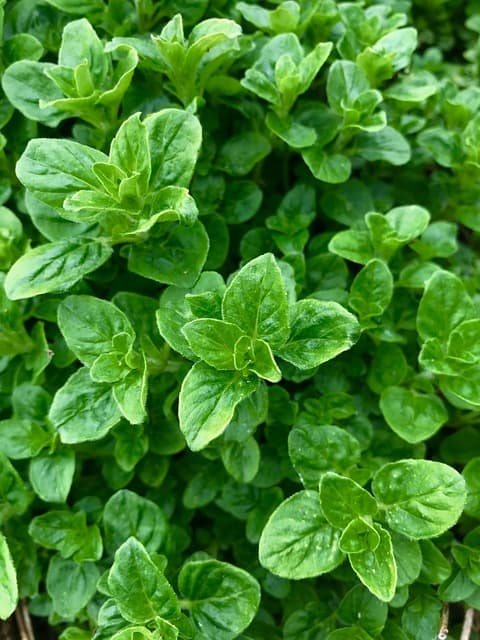
Harvesting oregano at the appropriate time is crucial to maintain the optimal flavor and quality of the leaves. One way to recognize the right time is when the oregano plant reaches a height of at least 6 inches. To ensure optimal flavor and aroma, waiting until the plant has sufficient foliage before harvesting oregano is important. The flavorful and fragrant essential oils of oregano are at their best.
Leaf taste decreases with flowering. Pick oregano in the morning after the dew has dried but before the sun is too strong. This is when the herb is freshest and essential oils are strongest.
The growing season for oregano is late spring through early autumn. By regularly harvesting, plants can be encouraged to produce an increased number of leaves and foster more compact and bushy growth.
Also, The size of the leaves is a good indicator of when to harvest. Oregano leaves should be mature but not overly large. Harvest when the leaves are at least a few inches long for the best flavor.
Also Read :- How To Harvest Rosemary Without Killing The Plant
Effective Methods for How to Harvest Oregano Without Killing the Plant
Remember a few key techniques to effectively harvest oregano without damaging the plant.
- Prune Gently: Use sharp pruning shears or scissors to make clean cuts. Avoid tearing or ripping the stems, as it can harm the plant. Trim the top of the plant, just above a growth node, to encourage further growth and maintain the plant’s health.
- Harvest Responsibly: To ensure the health and growth of oregano, avoid overharvesting. Only remove one-third of the plant’s growth at a time to allow for continued thriving and new leaf production.
- Timing Matters: For the best flavor, harvest oregano in the morning after the dew has dried and before the sun gets intense. The essential oils of oregano are at their peak during this time.
- Harvest Selectively: Harvest the upper, healthier stems and leaves. Leave the lower, woody parts of the plant intact for longevity.
- Leave Some Growth: Leave some leaves and stems on the plant to support growth and photosynthesis. Avoid stripping the plant completely.
- Avoid Flowering Stems: To encourage leaf production, it is recommended to pinch off flower buds rather than harvesting flowering stems.
- Regular Pinching: Instead of large harvests, consider regularly pinching back the tips of the stems throughout the growing season. This promotes bushier growth and discourages the plant from becoming leggy.
- Drying and Preserving: To store oregano, dry the leaves by harvesting whole stems and tying them in small bundles.
- Fertilize and Water: After a significant harvest, provide the oregano with a balanced, slow-release fertilizer and adequate water to help it recover and continue growing.

Equipment Needed for Safely Harvesting Oregano
To safely harvest oregano, you will need a few essential pieces of equipment.
- Gardening Shears or Pruners: Using sharp pruning shears or scissors to cut oregano stems without damaging the plant.
- Gloves: Wearing gardening gloves can protect your hands from irritants, thorns, or sharp edges in the garden.
- Basket or Container: You’ll need a container to collect the harvested oregano. A small basket, bucket, or plastic container with holes for ventilation works well.
- Twine or Rubber Bands: These are handy for bundling and hanging oregano sprigs for drying.
- Scissors or Kitchen Shears: For trimming leaves from the stems once you’ve harvested the oregano.
Why is Pruning important?
Pruning oregano is essential for promoting bushier and healthier growth. Regular pruning can prevent the plant from becoming leggy and stimulate the development of new flavorful leaves. Remove any dead or damaged stems to maintain the plant’s overall health. Pruning is different from regular harvesting as it involves more extensive trimming.
By incorporating pruning into your oregano care routine, you ensure continuous growth and a bountiful supply of fresh leaves for your culinary endeavors. Remember to use sharp scissors or shears for clean cuts and prune oregano during the best time, usually at the end of summer. Harvested stems can be composted to enrich your garden further.
How is Pruning Different from Regular Harvesting?
Certainly, here’s a table highlighting the key differences between pruning and regular harvesting:
| Aspect | Pruning | Regular Harvesting |
|---|---|---|
| Purpose | Promotes plant growth, shapes the plant, and removes dead or unhealthy growth. | Collects edible parts of the plant for consumption. |
| Timing | Typically done during the growing season to maintain the plant’s shape and health. | Occurs when the plant’s edible parts are ready for consumption. |
| Removal Amount | Involves cutting a significant portion of the plant, often including stems and leaves. | Typically involves removing only a portion of the plant, such as leaves or fruits. |
| Frequency | Less frequent, done periodically to maintain plant structure and vitality. | More frequent, depending on the plant’s growth and the desired harvest schedule. |
| Effect on Plant Growth | Encourages new growth and branching, leading to a bushier and healthier plant. | Reduces the plant’s overall size but promotes continuous leaf or fruit production. |
| Commonly Pruned Parts | Often involves cutting back stems, branches, or even the entire plant in some cases. | Involves removing leaves, fruits, or edible parts while leaving the main plant structure intact. |
| Timing of Pruning | Typically done in the early spring or late winter before new growth begins. | Harvesting can occur at various times during the growing season, depending on the plant and its edible parts. |
| Tools Used | Pruning shears, scissors, or saws are common tools for making larger cuts. | Hand-held tools like scissors or knives for precise removal of edible parts. |
Storing Freshly Harvested Oregano for Future Use
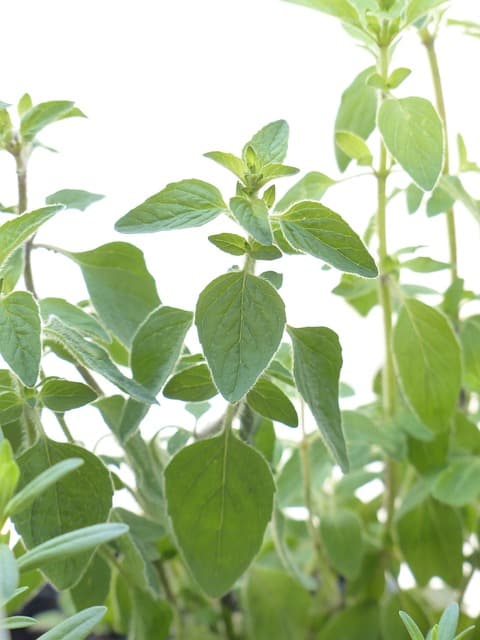
After harvesting oregano, it’s important to store it properly to preserve its freshness and flavor for future use.
- One of the best ways to dry oregano is by hanging bundles of fresh leaves upside down in a well-ventilated area.
- Store fresh oregano in an airtight container with a damp paper towel to keep fresh oregano from drying out.
- You have the alternative of keeping them in a freezer, which allows for preserving oregano for up to a year.
- Freezing helps preserve the flavor of oregano. Keeping fresh oregano in the refrigerator can extend its shelf life if you want to store fresh oregano.
- Using these different storage methods, you can enjoy the taste of oregano all year round.
How Drying Oregano for Long-Term Use?
Drying oregano is a popular method for preserving its harvest long-term. Drying herbs extends their shelf life and intensifies their flavor, making them ideal for culinary dishes.
To dry oregano at home, cut the oregano stems just above a leaf node using sharp scissors or shears. Group several stems together, forming small bundles. Clean and dry oregano sprigs, removing excess moisture using paper towels.
Tie the bundles with twine or a rubber band, creating hanging clusters. Hang the oregano stems upside down in a dark, well-ventilated area. Use a paper bag to catch any falling leaves.
Remove the dry and crumbly leaves from the stems after 1-2 weeks. Store the dried oregano in an airtight container to preserve its freshness and flavor.
This step-by-step guide lets you enjoy the best way to dry and store your oregano harvest without killing the plant.
Can you Substitute Greek Oregano with Rosemary, Basil, or Thyme?
Although Greek oregano is a unique plant with its flavor profile, several other herbs can be used as alternatives in cooking. Rosemary, basil, and thyme are all beautiful possibilities that can each lend their unique flavor to the dishes you prepare.

Rosemary
Rosemary possesses a robust and fragrant taste, reminiscent of oregano but with subtle pine notes. It complements meats and roasted vegetables excellently, providing a delectable and savory flavor.
Basil
With its sweet and slightly peppery flavor, Basil is commonly used in Italian cuisine. It adds a fresh and bright note to dishes like pasta sauces, salads, and pizzas. Its versatility makes it a great substitute for Greek oregano in various recipes.
Thyme
Conversely, Thyme has a slightly earthy and lemony flavor that complements many dishes. It works particularly well with poultry, stews, and soups.
When substituting Greek oregano with rosemary, basil, or thyme, remember the flavor profile you want to achieve in your dish.
Common Mistakes to Avoid When Growing Oregano
Growing oregano can be a rewarding and enjoyable experience. However, people make some common mistakes when cultivating this herb.
- Overwatering: One common mistake to avoid when growing oregano is overwatering. While oregano requires regular watering, it is important not to drown the plant. Water the soil evenly and allow it to dry out slightly between waterings.
- Soil: Another mistake is planting oregano in too rich or fertile soil. Oregano thrives in well-draining soil with moderate fertility. Too many nutrients can result in excessive foliage growth but may compromise the herb’s flavor and aroma.
- Overcrowding:- Additionally, overcrowding the plants can hinder their growth and increase the risk of diseases. Give each oreg ano plant enough space to thrive, allowing proper air circulation and minimizing the spread of pathogens.
- Not Pruning or Harvesting: Not pruning or harvesting oregano regularly is another mistake to avoid. Pruning helps promote bushier growth and prevents the plant from becoming lanky.
- Fertilizing Excessively: Fertilizing excessively is a common mistake that can harm oregano plants. While it’s important to provide nutrients, too much fertilizer can lead to weak, leggy growth and diminish the herb’s flavor.
- Allowing Flowering: Allowing oregano to flower can lead to a decline in flavor. Pinch off the flower buds as soon as they appear to encourage leaf production.
- Not Pruning in Winter: In colder climates, oregano may go dormant in the winter. Prune it back in late fall to prevent disease and encourage new growth in the spring.
- Neglecting Pests: Oregano can be susceptible to aphids and spider mites. Regularly inspect the plant for signs of infestation and take appropriate measures to control pests if necessary.
Is It Possible to Harvest Oregano Year-Round?
Oregano is a perennial plant that can be harvested throughout the year. Even in colder climates, where oregano may go dormant during winter, it can regrow in spring. By protecting it from frost and growing it indoors using containers, you can enjoy fresh oregano all year.
Can you grow oregano indoors?
You can grow oregano indoors using seeds, cuttings, or purchased plants. Start seeds indoors before the last frost. Mist them with water and cover them with plastic to germinate in a sunny location. Use a pot with drainage and quick-draining soil. Provide bright, indirect light and temperatures of 65-70°F (18-21°C) during the day and 55-60°F (13-16°C) at night.
Conclusion
Harvesting oregano can be a delicate process, but Knowing how to harvest oregano without killing the plant is vital for successful gardening. You can enjoy fresh herbs without harming the plant. By following these tips, you can continue to enjoy the delicious flavors of oregano while ensuring the longevity and health of your plant.
Source:-7 Simple Ways to Harvest Oregano – wikiHow
How to Grow and Care for Oregano (thespruce.com)
Growing Oregano: Learn How To Grow Oregano (gardeningknowhow.com)
